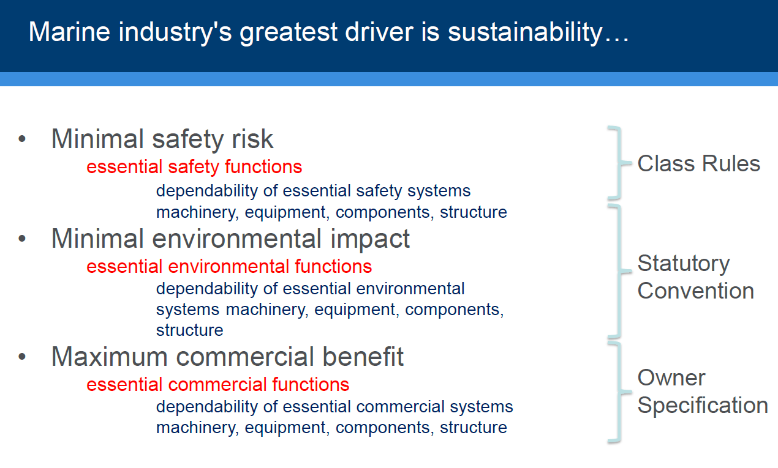![[নোঙর 2016] Autonomous ships and the future : Zakirul Bhuiyan (23)](https://bdmariners.org/wp-content/uploads/2016/06/Autonomous-ship.jpg)
[নোঙর 2016] Autonomous ships and the future : Zakirul Bhuiyan (23)
1 Introduction:
In recent years, the use and applications of emergent autonomous vehicles have been growing up in the different modes of transport within ground, air and marine domains. In the maritime sector, there are a number of small size unmanned and autonomous crafts which have been engaged in surface navigation, research and scientific activities, under water operations and specific military activities. These vessels are proven economically viable and safer by many researches as the human is not being involved and as such there are less human errors. A recent USCG (United States Coast Guard) report states that ‘between 75-96% of marine casualties are caused at least in part by some forms of human errors’ (Rothblum, 2000). In the MUNIN (Maritime Unmanned Navigation through Intelligence in Networks) Project of unmanned ships, Burmeister et al. (2014) argued that the development of autonomous vessels will provide a comprehensive solution to meet the major challenges of the maritime transport industry including reduction of operational expenses, environmental impact and human fatigue. However, presently there are many challenges to implement such vessels commercially in the international frameworks following the IMO’s (International Maritime Organisation) rules and regulations on the seas (Allen 2012). No doubt, at present there are sophisticated modern technologies enabling for the autonomous vessels to exist in the market; but these autonomous systems will create numerous challenges especially social, economic and regulatory challenges.
The aim of this paper is to review and highlight the future implementation of autonomous vessels in merchant shipping operation. Here the author has attempted to find out whether the operation of autonomous ships are useful, cost effective, safe and accepted to the marine community. He also recommends some possible solutions towards the future implementation of autonomous ships.
2 What is ‘Autonomous Ship’?
According to European Technology Platform (MUNIN, 2012), an autonomous ship is described as:
“Next generation modular control systems and communications technology will enable wireless monitoring and control functions both on and off board. These will include advanced decision support systems to provide a capability to operate ships remotely under semi or fully autonomous control”.
There are two generic alternatives that are combined in an autonomous ship:
• “the remote ship where the tasks of operating the ship are performed via a remote control mechanism e.g. by a shore based human operator” and
• “the automated ship where advanced decision support systems on board undertake all the operational decisions independently without intervention of a human operator”.
3 Driving forces towards autonomous ships and its present level of developments
Implementing an autonomous vessel will offer the possibility to increase the efficiency of ship operation as well as enhance the ‘sustainability’, which is the greatest driver in any industry (United Nations, 2005). The sustainable development in the shipping world consists of three dimensions such as minimal safety risk, minimal environmental impact and maximum commercial benefits (Cuckson, 2015), which are illustrated in Figure 1.

Figure 1: Marine industry’s greatest driver is sustainability (Source: Cuckson, 2015)
The development of autonomous ships is an ever-growing capability of emerging technology. The increasing belief of marine community is that any accident is unacceptable and the continuing evidence shows that most accidents are caused by incorrect actions by humans. The striving for cost reduction and better service are leading towards the introduction of autonomous ships are imminent in the shipping operation (Norris, 2015).
There are three main costs involved in the ship’s operations; mainly costs of fuel, ship and crew. Crew costs on board ships are one of the main operational cost categories. According to the Drewry Report of 2011 (Gardiner, 2011), the costs were ‘on average between 31 and 36% of the total ship operation costs’ for bulk carriers (largely used to transport bulk cargoes). Moreover, several studies revealed that many accidents in maritime transportation caused by the human errors (Sanquist, 1992, Blanding, 1987 and Rothblum, 2000) and these figures range as high as 64% to 96% and the errors derived from a number of Human elements issues from the crews on board including fatigue, poor maintenance and standards, inadequate knowledge and information, poor communication skills (Rothblum, 2000).
Automation in shipping is a journey of 50 years old. The first successful automated seagoing ship ‘kinkasan Maru’ was introduced in 1961 (Franzelius, 2015). The remotely controlled unmanned vessels had been used in the World War II, where the ships deployed as gunnery and missile target systems (Corfield and Young, 2006). A surface, underwater and aerial drone network in communication is representing a potentially powerful tool in military surveillance and has been used since GPS was introduced in the early 80’s (Cambell et al., 2012). Unmanned Surface Vehicles (USV) or Autonomous Surface Vehicles (ASV) have been developed since 1993 which are largely used by the oceanographic centres to carry out scientific research at sea. Hence, the use of autonomous ships still exists; but the implementation of such vessels commercially (especially SOLAS ships) need to establish at sea in the international frameworks following the rules and regulations of International conventions at sea.
4 The Challenges
There are many challenges while introducing the autonomous ships to the maritime industry such as changes in new building costs with the new designs and technological features, availability and robustness of systems, cyber security and developing harmonised standards. These challenges are not primarily caused by technical obstacles and they are arguably the integration of the autonomous ship into the existing maritime operation. The author has mainly focused to the following challenges:
4.1 Social challenge
The so-called ‘human-out-of-the-loop syndrome’ is considered to be a big issue in the automatic systems (Endsley & Jones, 2012 and Wickens et al., 2013). Moreover, the “social acceptability” issue that may make the unmanned ship “look” riskier than a traditional manned ship; especially passenger ships (Sage-Fuller, 2015). For the unmanned vessels which will be controlled and operated from the SCC (Shore Control centre), it is expected that Human error might move some extent to the programming and remote control room arenas. Moreover, transferring ‘ship sense’ from a remotely located vessel to the controlled environment of a SCC (Shore Control Centre) can be added to a further challenge (Burmeister et al, 2014).
4.2 Regulatory challenge
Existing regulations at sea could be the main obstacles to the autonomous ships as the current international conventions address the manned vessels only. There is a need to update the existing international conventions such as SOLAS (Safety of Life at Sea) and COLREGS (Collision Regulations) to accommodate the development of the unmanned ships. The liability for any accidents and the enforcement for the autonomous vessels need to be developed and agreed with the member states of IMO. Moreover, the development of technical and operational standards will be required for the autonomous system including the commercial agreements e.g. chartering, management and insurance (Rodeth and Burmeister, 2004).
4.3 Economic Challenge
The new building costs with the new designs and technological features for the autonomous ships are the key economic challenges ahead. The robust communication channels by various systems must be available and acceptable to the ship operation (Burmeister, et al. 2014). A new infrastructure with the ship and the shore side operation centre (e.g. an advanced VTS centre) will be required. In the unmanned system, crew will be shifted from ship to shore in some cases. Although crew related costs on board the ship will be reduced, but the additional costs for land based services such as shore control centre, personnel cost, and equipment and maintenance crews in port will be increased.
5 Ways to overcome the challenges
Changing the public perception will be the key way to address the challenge of ‘human-out-of-the-loop syndrome’. In this regard, an example can be given to London’s next generation of “driverless” tube train which was initially unveiled in 2014. These trains will be running safely automated when they come into full service in 2020s (Telegraph, 2014). It’s true that airline automation systems allow pilots to fly “hands off” beginning soon after take-off, continuing through the entire flight route until all the way through landing the ground (Patterson, 2012). Hence, this is all about the changing the public mind-set and it only requires an enormous media publicity.
The current maritime convention should be applied with the equivalency principle. There are presently many forums are working to address these issues e.g. SARUMS (Safety and Regulations for European Unmanned Maritime Systems) working group, UK MASRWG (Marine Industries Alliance Maritime Autonomous Systems Regulatory Working Group). Lloyds Register of shipping has recently proposed the design code which will promote good design and quality manufacturing processes of autonomous ships (Cuckson, 2015). The Innovate UK’s project ‘MAXCMAS’ (MAchine eXecutable Collision regulations at Sea for Marine Autonomous System) where the equivalence collision avoidance algorithm for the autonomous vessels will be tested empirically in the SSU’s (Southampton Solent University) ship simulators. The author has been actively involved in this collaborative research project working with Rolls-Royce and other partners as a SME (Subject Matter Expert).
It needs to stress that if the fuel costs increases then the environmental regulations get tougher and the fuel costs can easily be reduced using slow-steaming (reduction of speed of a ship) concepts; then the other two costs (ship and crew costs) increase due to the longer shipping time. However, using autonomous ship navigation operation, these costs of crew and ship could be minimised (SSPA, 2015) and thus the system will offer a potential to reduce a significant part of the ship’s operational costs.
6 The possible solution for implementing autonomous ships:
The International maritime conventions adopted by IMO are pivotal to the prevention of accidents at sea as they provide a set of guidelines for safe navigation, but as such, were written for human navigators. Given technology advances in driverless vehicles and unmanned flights, equivalent legislation for air and road travel is coming under increased scrutiny. Maritime regulations are however unlikely to change in short timescales given inherent conservatism and inertia, and the fundamental freedom to navigate the seas. Development of legislation for autonomous vessels is crucial for the introduction of autonomous ships to the maritime domain. The possible recommended solution for implementing autonomous ships can be addressed in three phases:
Phase 1: At the beginning, an introduction of an unmanned bridge concept with a minimum manning on board a ship where periodically unattended bridge on the manned vessels is recommended (Bermeister, 2015). It would be same concept of ‘Class notation E0’ which is considered to meet the regulations of the International Convention for the Safety of Life at Sea for unattended machinery spaces. This regulation for the unmanned machinery spaces is presently running in many commercial vessels and the equivalent concepts of ‘Class notation B0’ could be transferred to the ship’s bridges where the ship’s navigation is carried out. Innovative sensors as well as new procedures along with the analysis methodology need to be gradually introduced to the bridge navigation system to detect early signs of any degradation and failure.
Phase 2: In the second stage, there will be a remote pilotage system of including integration with ship and the shore side operations centre. Here it will be more advanced VTS (Vessel Traffic System) from the shore with some direct controls over the ships and their intended routes. Participation of an autonomously operated ship in a SAR (Search and Rescue) operation will be an advantage to understand the operation of autonomous system. This may include the detection of any emergency situations, e.g. identifying life-boats and/or life-rafts and reporting the same to the SAR authority.
Phase 3: In the final stage, there will be the remote pilotage of larger vessels based on shore-based control centres using IMO’s e-navigation operational harmonised tools. Then greatly increasing use of fully small and medium size autonomous vessels followed by the full implementation of large commercial vessels at sea.
7 Conclusion
The implementation of the autonomous ships will certainly provide the pathway for a sustainable development for the shipping as the humans should fully explore the sociological implications as many advances remain in the machine intelligence (Norris, 2015). The discussion in this paper shows the significant driving forces such as minimal safety risk, minimal environmental impact and maximum commercial benefits towards the implantation of autonomous ships in the maritime sector. There are enormous advantages with this revolutionary system and it will change the shipping in many areas such as reduction of crew costs, fuel savings, elimination of human errors as well as cost effective operation. However, there are many challenges such as social, economic and regulatory ones while implanting this autonomous system. An autonomous vehicle should operate safely and effectively in a real world environment while doing operations of direct commercial value and which can be manufactured, maintained, deployed, operated and retrieved at an acceptable cost (Rodseth, 2015).
—————————–
Capt Zakirul Bhuiyan (23) MSc, PGCE, FNI, FRIN: On completion of cadet training in Bangladesh Shipping Corporation, Zakirul joined Valles Steamship (Canada) Ltd in 1992 as a junior officer and subsequently took his first command in 2003 on Gateway Bulker of 171,000 mt deadweight, the second most expensive capesize bulk carrier ever built at the time. He has been working as Senior Lecturer, Bridge Simulator at Warsash Maritime Academy (WMA), Southampton Solent University, since May, 2006. In his present role, he is the Simulation Section lead for Research Projects and Consultancy Developments. He is presently working for the execution of the Solent university work packages Innovate unmanned ship Project ‘MAXCMAS’ and the EU funded ‘Sea Traffic Management.’ He has also been acting as Project Co-ordinator with Professor John Chudley in the EU funded ‘MariEMS’ (Maritime Energy Management Training Strategic Partnership) project. Previously, he had been the course managers for various bridge simulator courses in WMA.
Capt. Bhuiyan has been invited as a speaker for numerous international conferences, and his articles on ECDIS, e-Navigation, Autonomous Ships and Simulation Training have been published in a number of international journals and publications. He has been invited to join the UK delegation to the IMO different sub-committee sessions as a member of several Drafting and Working groups and sits on a number of industry working groups such as UK Marine Autonomous Systems Regulatory Working Group. Being a Fellow of the Nautical Institute and Royal Institute of Navigation, he has established good networks in the wider maritime community.





![[নোঙর 2016] Message From the President](https://bdmariners.org/wp-content/uploads/2016/05/R-Qader_Message-220x180.jpg)







Recent Comments